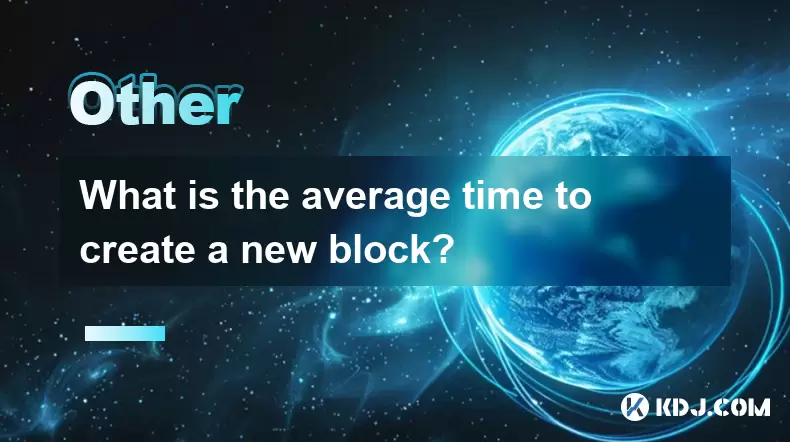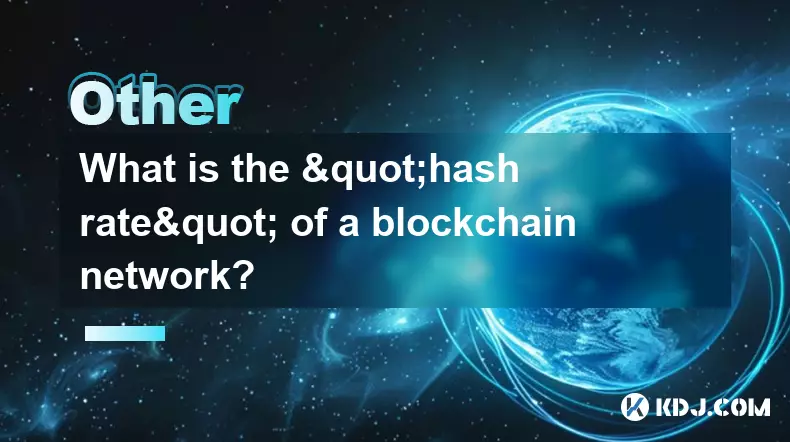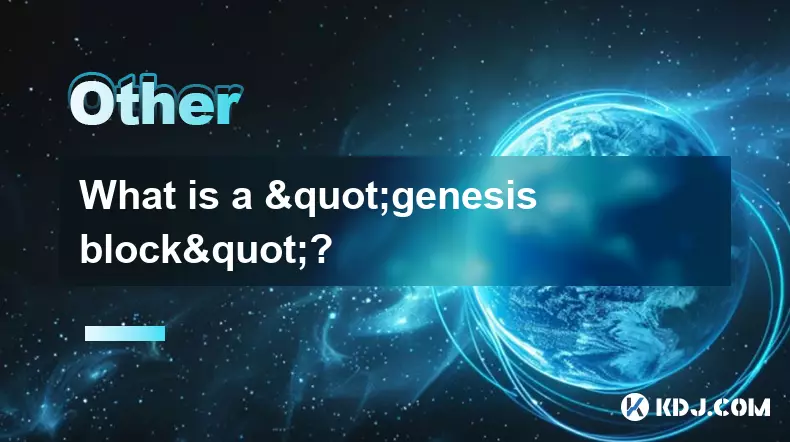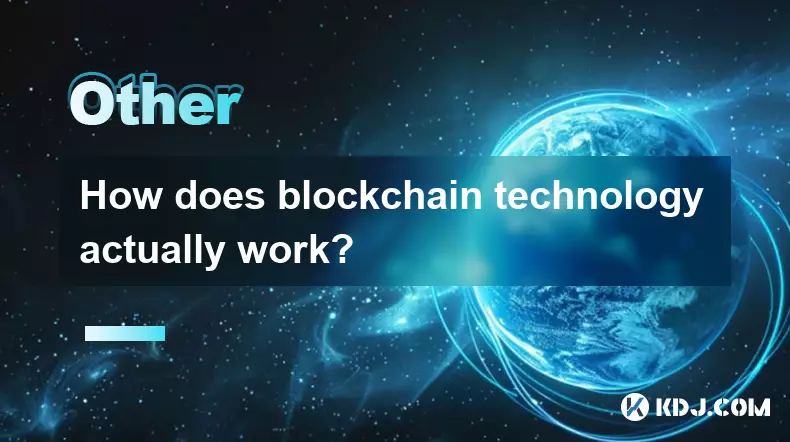-
 bitcoin
bitcoin $99177.955738 USD
-7.32% -
 ethereum
ethereum $3187.183061 USD
-12.38% -
 tether
tether $0.999809 USD
0.00% -
 xrp
xrp $2.117933 USD
-9.42% -
 bnb
bnb $906.710033 USD
-9.17% -
 solana
solana $149.367737 USD
-10.74% -
 usd-coin
usd-coin $0.999816 USD
0.01% -
 tron
tron $0.281498 USD
-0.38% -
 dogecoin
dogecoin $0.156292 USD
-8.00% -
 cardano
cardano $0.500744 USD
-10.19% -
 hyperliquid
hyperliquid $38.087358 USD
-4.58% -
 chainlink
chainlink $14.097831 USD
-8.54% -
 bitcoin-cash
bitcoin-cash $463.329916 USD
-9.22% -
 ethena-usde
ethena-usde $0.999078 USD
-0.01% -
 unus-sed-leo
unus-sed-leo $9.475862 USD
-0.79%
What is the average time to create a new block?
The average block creation time varies by blockchain: Bitcoin takes ~10 minutes, Ethereum ~12 seconds, and Solana under half a second.
Aug 06, 2025 at 09:21 pm

Understanding Block Creation in Blockchain Networks
The average time to create a new block varies significantly depending on the specific blockchain protocol in use. Each blockchain network is designed with its own consensus mechanism and target block time to balance speed, security, and decentralization. For instance, Bitcoin has a target block time of 10 minutes, meaning that on average, a new block is added to the Bitcoin blockchain every 10 minutes. This interval is not fixed but is instead a statistical average maintained through difficulty adjustments. The network automatically recalibrates the mining difficulty approximately every 2016 blocks to ensure that the average time remains close to 10 minutes, even as computational power (hash rate) fluctuates.
In contrast, Ethereum, which transitioned from Proof of Work (PoW) to Proof of Stake (PoS) with 'The Merge' in 2022, operates with a much shorter block time. Under the PoS mechanism, Ethereum targets a block time of 12 seconds. This faster rate allows for quicker transaction confirmations and improved network responsiveness. The shift to PoS enabled more predictable block intervals because validators are scheduled in advance rather than competing to solve cryptographic puzzles.
Other blockchains have different design goals. For example, Litecoin aims for a 2.5-minute block time, making it four times faster than Bitcoin. This is achieved by adjusting the difficulty retargeting algorithm and hash function. Similarly, Binance Smart Chain (BSC) uses a consensus model that allows for approximately 3-second block times, prioritizing high throughput and low latency for decentralized applications (dApps) and smart contracts.
Factors Influencing Block Generation Time
Several technical and network-level factors influence how long it takes to generate a new block. The most critical factor is the consensus mechanism employed by the blockchain. In Proof of Work (PoW) systems like Bitcoin, miners must solve complex mathematical problems, and the time required depends on the total network hash rate and the current difficulty level. The difficulty adjustment algorithm ensures that even if more miners join the network, the average time to find a block remains stable.
In Proof of Stake (PoS) systems such as Ethereum 2.0, block proposers are selected algorithmically based on the amount of cryptocurrency they stake and other randomization factors. This eliminates the need for energy-intensive computations, allowing for shorter and more consistent block intervals. The network enforces strict timing through a system of slots and epochs, where each slot represents a 12-second window during which a block can be proposed.
Network congestion and propagation delays also play a role. Even if a block is mined or proposed on time, delays in broadcasting it across the peer-to-peer network can affect perceived block times. However, modern blockchains use optimized relay networks and compression techniques to minimize these delays.
How Block Time Affects Transaction Confirmation
The block time directly impacts how quickly transactions are confirmed. On Bitcoin, a transaction included in a block is typically considered secure after six confirmations, which on average takes about 60 minutes (6 blocks × 10 minutes). Shorter block times, like Ethereum’s 12 seconds, allow for faster finality, with users often accepting 15–30 seconds as sufficient for low-value transactions.
However, faster block creation does not always mean better performance. Very short block times can lead to higher rates of orphaned blocks (in PoW) or increased network strain due to larger blockchain growth. For example, if blocks are produced too quickly, nodes may struggle to download and validate them in time, potentially compromising decentralization.
Some networks implement dynamic block times or variable block sizes to adapt to demand. For instance, Dash uses a two-tier network with masternodes and has an average block time of 2.5 minutes, similar to Litecoin, but includes features like InstantSend for near-instant confirmations under certain conditions.
Step-by-Step: How to Check Current Block Time on a Blockchain
To determine the actual block time on any blockchain, you can follow these steps using a blockchain explorer:
- Navigate to a reliable blockchain explorer such as blockstream.info for Bitcoin or etherscan.io for Ethereum.
- Locate the most recently mined block on the homepage.
- Click into the block details to view the timestamp.
- Repeat this process for the previous 5–10 blocks.
- Record the timestamp for each block.
- Calculate the difference in seconds between consecutive blocks.
- Add all the differences and divide by the number of intervals to get the average block time over that period.
For automated monitoring, you can use APIs like the Blockchain.com API or Etherscan API to fetch block data programmatically. For example, using cURL to query the Bitcoin API:
curl https://blockchain.info/latestblockThis returns JSON data including the timestamp and height of the latest block. By comparing multiple responses over time, you can compute real-time average block intervals.
Comparing Block Times Across Major Cryptocurrencies
Different cryptocurrencies optimize for different use cases, reflected in their block times:
- Bitcoin: 10 minutes – Prioritizes security and decentralization over speed.
- Ethereum: 12 seconds – Balances speed and smart contract functionality.
- Litecoin: 2.5 minutes – Faster than Bitcoin, designed for payments.
- Binance Smart Chain: ~3 seconds – Optimized for dApps and low fees.
- Cardano: 20 seconds – Uses Ouroboros PoS for predictable intervals.
- Solana: ~400 milliseconds – Extremely fast, uses Proof of History (PoH) for timekeeping.
These differences highlight trade-offs between decentralization, scalability, and security. Networks with sub-second block times often rely on more centralized validator sets or advanced synchronization methods to maintain consistency.
Frequently Asked Questions
Why doesn’t Bitcoin have a fixed block time of exactly 10 minutes?The 10-minute target is an average. Due to the probabilistic nature of mining, some blocks are found in seconds, while others may take 20 minutes or more. The network adjusts difficulty every 2016 blocks to maintain this long-term average.
Can block time be changed by the network?Yes, but only through a hard fork or protocol upgrade. For example, Ethereum’s shift to PoS drastically reduced block time. Such changes require broad community and developer consensus.
Does a shorter block time mean faster transactions?Generally yes, but transaction speed also depends on network congestion, gas fees, and mempool size. A short block time helps, but high demand can still cause delays in inclusion.
What happens if a block is mined too quickly?In PoW systems, rapid block discovery triggers the difficulty adjustment algorithm to increase mining difficulty at the next retargeting period, slowing down future block production to maintain the target interval.
Disclaimer:info@kdj.com
The information provided is not trading advice. kdj.com does not assume any responsibility for any investments made based on the information provided in this article. Cryptocurrencies are highly volatile and it is highly recommended that you invest with caution after thorough research!
If you believe that the content used on this website infringes your copyright, please contact us immediately (info@kdj.com) and we will delete it promptly.
- Altcoins, Revenue, and Market Drops: Navigating the Crypto Seas
- 2025-11-06 05:15:01
- Crypto Presales: Navigating Market Bleeding and Finding the Best Investments
- 2025-11-06 04:35:01
- Metaplanet's Bold Bitcoin Bet: Corporate Credit and the Future of Treasury Strategies
- 2025-11-06 04:50:02
- From Coin Flips to Customer Interactions: The Unpredictable World of Games and Retail
- 2025-11-06 04:55:01
- Coins, Crypto Presales, and a Buzzing Mosquito: What's Hot in 2025
- 2025-11-06 05:10:01
- DeepSnitch AI Leads Crypto Presales Amid Market Rally: A New Era for AI-Powered Trading
- 2025-11-06 05:30:01
Related knowledge

What is a block explorer and how do you use it?
Oct 24,2025 at 12:36am
What Is a Block Explorer?1. A block explorer is a web-based tool that allows users to view and analyze data on a blockchain network in real time. It f...

What is the "hash rate" of a blockchain network?
Oct 10,2025 at 03:55pm
Understanding Hash Rate in Blockchain Networks1. The hash rate refers to the total computational power being used to process transactions and mine new...

What is a "genesis block"?
Oct 15,2025 at 07:55pm
Understanding the Genesis Block in CryptocurrencyThe genesis block is the very first block in a blockchain network. It serves as the foundation upon w...

Who is Satoshi Nakamoto?
Oct 15,2025 at 01:01pm
Who is Satoshi Nakamoto?1. Satoshi Nakamoto is the pseudonymous individual or group credited with creating Bitcoin, the first decentralized cryptocurr...

How does blockchain technology actually work?
Oct 11,2025 at 02:36pm
Understanding the Core Mechanism of Blockchain1. At its foundation, blockchain is a decentralized digital ledger that records transactions across mult...

What is a token economy?
Sep 20,2025 at 12:18am
Understanding the Foundations of a Token Economy1. A token economy in the context of cryptocurrency refers to a system where digital tokens are used a...

What is a block explorer and how do you use it?
Oct 24,2025 at 12:36am
What Is a Block Explorer?1. A block explorer is a web-based tool that allows users to view and analyze data on a blockchain network in real time. It f...

What is the "hash rate" of a blockchain network?
Oct 10,2025 at 03:55pm
Understanding Hash Rate in Blockchain Networks1. The hash rate refers to the total computational power being used to process transactions and mine new...

What is a "genesis block"?
Oct 15,2025 at 07:55pm
Understanding the Genesis Block in CryptocurrencyThe genesis block is the very first block in a blockchain network. It serves as the foundation upon w...

Who is Satoshi Nakamoto?
Oct 15,2025 at 01:01pm
Who is Satoshi Nakamoto?1. Satoshi Nakamoto is the pseudonymous individual or group credited with creating Bitcoin, the first decentralized cryptocurr...

How does blockchain technology actually work?
Oct 11,2025 at 02:36pm
Understanding the Core Mechanism of Blockchain1. At its foundation, blockchain is a decentralized digital ledger that records transactions across mult...

What is a token economy?
Sep 20,2025 at 12:18am
Understanding the Foundations of a Token Economy1. A token economy in the context of cryptocurrency refers to a system where digital tokens are used a...
See all articles










































































